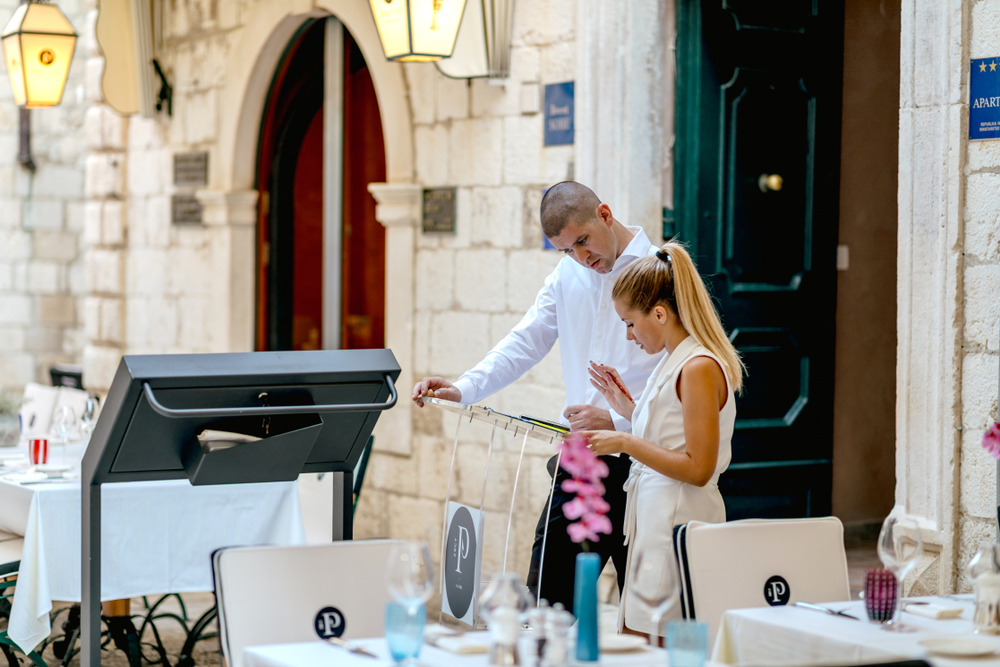Tourism in Croatia: the contribution of European cohesion policies
Between 2014 and 2020, a significant portion of the funds granted by the EU cohesion policy in Croatia went on training, with numerous projects focused on the tourism sector

Turismo-in-Croazia-il-contributo-delle-politiche-europee-di-coesione
Dubrovnik - © tartanparty/Shutterstock
Croatia thrives on tourism (a lot of data in this regard can be found in the previous article “Croazia e coronavirus: tutti i dati sul turismo”). Leaving aside the abrupt slowdown in tourist flows due to the coronavirus pandemic, over the last few years the sector has come to represent one fifth of the national wealth produced each year.
This report makes it immediately clear how important and strategic it is for Croatia to invest not only in infrastructure, but also in human capital, in particular in the training of young people who in the future will occupy positions directly related to the tourism sector. There is no doubt that in Croatia the labour market in tomorrow’s tourism sector must be planned and prepared today, starting above all with the skills of young people.
Croatia’s entry into the European Union in 2013 allowed the country to access EU resources made available within the multi-year spending plans. In the context of the cohesion policies of the European Union (for more information see "Unione europea: politiche di coesione e sud-est Europa") between 2014 and 2020, Croatia received funds worth more than 9 billion Euros, including 4.73 from the European Regional Development Fund (ERDF), 2.13 from the Cohesion Fund, 1.94 from the European Social Fund (ESF), and 206 million Euros from the Initiative for Youth Employment (YEI).
The graph below shows the part of these funds (in millions of Euros) that was used to finance education and employment projects.
Overall, this is a total of 1.37 billion Euros, approximately 15% of the funds received by Croatia in the period considered – a significant percentage in comparison with the other Balkan states. Except for neighbouring Slovenia, which invests over 17% of European resources in education and employment initiatives, we note that on the same front the other countries do not even reach the double figures: 5.5% Bulgaria, 5.9% Cyprus, 8.5% Greece, and only 3.7% Romania.
At the moment there is no estimate of how many of these education and employment funds directly concern the tourism sector. However, the list of projects funded in this area is substantial – just to name a few, the project by KLIK Pula "Center of competence for the permanent development of innovative knowledge and skills in the catering and tourism sector", or the establishment of a "Regional Competence Center" in tourism and hospitality ”in Dubrovnik.
The projects carried out or in progress do not only concern the coastal resorts, well-known tourist destinations, but also the hinterland. For example, the "Medical Center for Education, Research and Health Tourism" in Pakrac, which aims to leverage the many thermal resorts of Lipik as an obvious tourist attraction, or V.R.I.S.A.K. Baranje, which aims to introduce young people between 15 and 25 years of age to the cultural heritage of the Osjecko-Baranjska region in order to promote the long-term tourist offer.
This content is published in the context of the “Work4Future” project co-financed by the European Union (EU). The EU is in no way responsible for the information or views expressed within the framework of the project. The responsibility for the contents lies solely with OBC Transeuropa. Go to the “Work4Future“
Tag: Work for Future
Featured articles
- Take part in the survey
Tourism in Croatia: the contribution of European cohesion policies
Between 2014 and 2020, a significant portion of the funds granted by the EU cohesion policy in Croatia went on training, with numerous projects focused on the tourism sector

Turismo-in-Croazia-il-contributo-delle-politiche-europee-di-coesione
Dubrovnik - © tartanparty/Shutterstock
Croatia thrives on tourism (a lot of data in this regard can be found in the previous article “Croazia e coronavirus: tutti i dati sul turismo”). Leaving aside the abrupt slowdown in tourist flows due to the coronavirus pandemic, over the last few years the sector has come to represent one fifth of the national wealth produced each year.
This report makes it immediately clear how important and strategic it is for Croatia to invest not only in infrastructure, but also in human capital, in particular in the training of young people who in the future will occupy positions directly related to the tourism sector. There is no doubt that in Croatia the labour market in tomorrow’s tourism sector must be planned and prepared today, starting above all with the skills of young people.
Croatia’s entry into the European Union in 2013 allowed the country to access EU resources made available within the multi-year spending plans. In the context of the cohesion policies of the European Union (for more information see "Unione europea: politiche di coesione e sud-est Europa") between 2014 and 2020, Croatia received funds worth more than 9 billion Euros, including 4.73 from the European Regional Development Fund (ERDF), 2.13 from the Cohesion Fund, 1.94 from the European Social Fund (ESF), and 206 million Euros from the Initiative for Youth Employment (YEI).
The graph below shows the part of these funds (in millions of Euros) that was used to finance education and employment projects.
Overall, this is a total of 1.37 billion Euros, approximately 15% of the funds received by Croatia in the period considered – a significant percentage in comparison with the other Balkan states. Except for neighbouring Slovenia, which invests over 17% of European resources in education and employment initiatives, we note that on the same front the other countries do not even reach the double figures: 5.5% Bulgaria, 5.9% Cyprus, 8.5% Greece, and only 3.7% Romania.
At the moment there is no estimate of how many of these education and employment funds directly concern the tourism sector. However, the list of projects funded in this area is substantial – just to name a few, the project by KLIK Pula "Center of competence for the permanent development of innovative knowledge and skills in the catering and tourism sector", or the establishment of a "Regional Competence Center" in tourism and hospitality ”in Dubrovnik.
The projects carried out or in progress do not only concern the coastal resorts, well-known tourist destinations, but also the hinterland. For example, the "Medical Center for Education, Research and Health Tourism" in Pakrac, which aims to leverage the many thermal resorts of Lipik as an obvious tourist attraction, or V.R.I.S.A.K. Baranje, which aims to introduce young people between 15 and 25 years of age to the cultural heritage of the Osjecko-Baranjska region in order to promote the long-term tourist offer.
This content is published in the context of the “Work4Future” project co-financed by the European Union (EU). The EU is in no way responsible for the information or views expressed within the framework of the project. The responsibility for the contents lies solely with OBC Transeuropa. Go to the “Work4Future“
Tag: Work for Future










